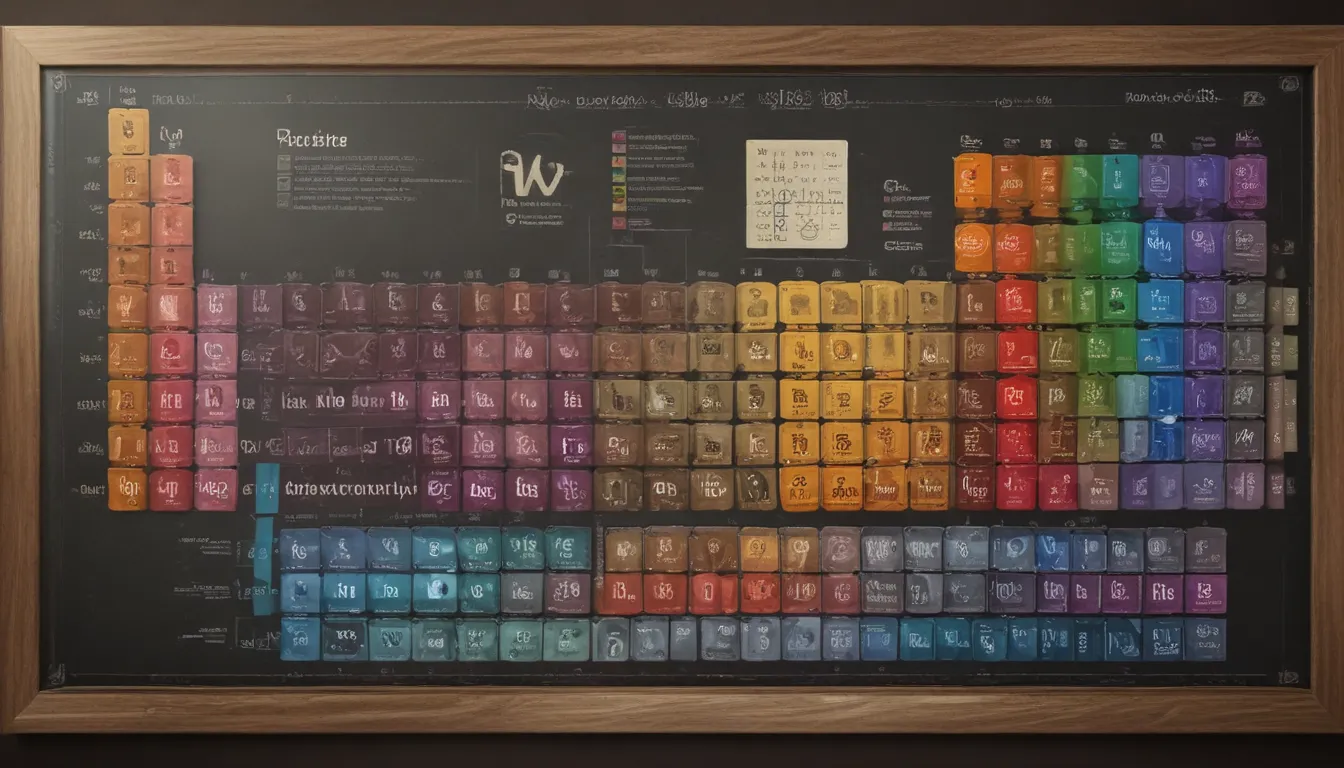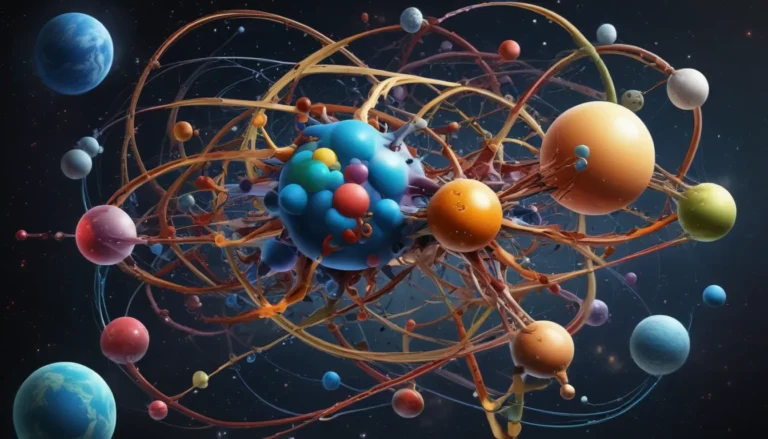A Note About Images: The images used in our articles are for illustration purposes only and may not exactly match the content. They are meant to engage readers, but the text should be relied upon for accurate information.
Have you ever been captivated by the enigmatic patterns of the Periodic Table? This iconic chemistry tool is not just a simple arrangement of elements; it is a treasure trove of fascinating facts that can deepen your understanding of the chemical world. Whether you’re a chemistry enthusiast, a curious student, or simply someone intrigued by the wonders of science, the Periodic Table holds a wealth of knowledge waiting to be explored.
Unlocking the Secrets of the Periodic Table
The Periodic Table serves as a comprehensive organizing system for the chemical elements. It is a tabular arrangement of elements based on their atomic number, electron configuration, and recurring chemical properties. By providing a systematic way to understand the relationships between elements, it helps scientists predict their behavior and unravel the mysteries of the elemental world.
Delving into the Diversity of Elements
With a staggering 118 known elements on the Periodic Table, ranging from familiar ones like hydrogen and oxygen to exotic elements like technetium and promethium, the diversity of elements on the table is truly awe-inspiring. Each element is represented by a unique symbol, making it easier to identify and study their individual properties.
The Legacy of Dmitri Mendeleev
The Periodic Table owes its creation to the brilliant Russian scientist, Dmitri Mendeleev, who first organized the elements in a systematic manner in 1869. By arranging the elements based on their atomic mass, Mendeleev was able to predict the existence of elements that had not yet been discovered, laying the foundation for the modern Periodic Table we use today.
Unraveling the Patterns Within the Table
One of the key principles of the Periodic Table is the arrangement of elements by their atomic number. This number indicates the number of protons in an element’s nucleus, and elements with similar chemical properties appear at regular intervals when arranged in increasing order of their atomic number. This systematic organization helps scientists make sense of the complex relationships between elements.
Exploring Group Behavior
Elements in the same group of the Periodic Table share similar chemical properties because they often have the same number of valence electrons. These electrons determine an element’s reactivity and bonding behavior, highlighting the importance of group classification in understanding the behavior of elements.
Understanding the Blocks of the Periodic Table
The Periodic Table is divided into s-block, p-block, d-block, and f-block, each representing a different region of the table based on the types of orbitals in which the elements’ valence electrons are found. These blocks play a crucial role in determining an element’s properties, highlighting the complexity and diversity of the elemental world.
Unveiling Unique Element Groups
From the noble gases in Group 18, known for their low reactivity, to the transition metals in the d-block, essential for various industrial applications, the Periodic Table showcases a wide range of element groups with distinctive properties and roles in the chemical world.
The Significance of Lanthanides and Actinides
The f-block of the Periodic Table contains the lanthanides and actinides, also known as the “rare earth elements.” These elements have unique properties that make them valuable in applications such as the production of magnets and nuclear energy, highlighting their importance in various scientific and industrial fields.
The Constant Evolution of the Periodic Table
As scientists continue to discover and synthesize new elements, the Periodic Table remains in a state of constant expansion. The recent recognition of tennessine as a new element in 2016 underscores the ongoing exploration and growth of our understanding of the elemental world.
Harnessing the Power of Predictive Science
By leveraging the periodic trends and patterns within the table, scientists can predict the properties of unknown elements, guiding the search and synthesis of new elements. This predictive power is instrumental in advancing our knowledge of the chemical world and unlocking new possibilities for scientific exploration.
Bridging the Gap between Theory and Practice
The connection between an element’s position in the Periodic Table and its electron configuration is a crucial link that helps scientists understand an element’s reactivity and bonding behavior. This information is vital for bridging the gap between theoretical knowledge and practical applications in chemistry and materials science.
Embracing the Beauty of Diversity
From the lightest element, hydrogen, to the heaviest, oganesson, the Periodic Table showcases the incredible diversity of elements that make up our world. Each element exhibits a unique set of properties, highlighting the vast range of possibilities and discoveries waiting to be made in the elemental realm.
Mastering Chemistry with the Periodic Table
For anyone aspiring to delve deeper into the world of chemistry, a solid understanding of the Periodic Table is essential. It serves as a cornerstone for studying the principles and patterns that govern the behavior of elements, empowering students and scientists to unlock the secrets of the chemical world.
Conclusion: Embracing the Marvels of the Periodic Table
In conclusion, the Periodic Table stands as a beacon of knowledge in the realm of chemistry, offering a wealth of information about the elements that shape our world. From its origins in the work of Dmitri Mendeleev to its modern-day applications in various scientific fields, the Periodic Table continues to inspire and enlighten those curious about the wonders of the chemical world. Let us take a moment to appreciate the complexity and beauty of this iconic tool that helps us make sense of the vast and intricate world of elements.
FAQs: Journeying Deeper into the World of Elements
As you embark on your exploration of the Periodic Table, delve into these frequently asked questions to expand your knowledge and gain a deeper understanding of the elemental realm.
Your Gateway to Elemental Enlightenment
As you immerse yourself in the captivating world of the Periodic Table, let our engaging content serve as your guide to unraveling the mysteries and wonders that lie within. With tantalizing articles and intriguing tidbits, we invite you to quench your thirst for knowledge and embark on a journey of discovery through the elemental realm. Join us in exploring the beauty and complexity of the elements that make up our world, and let the Periodic Table be your gateway to a world of endless fascination and learning.






